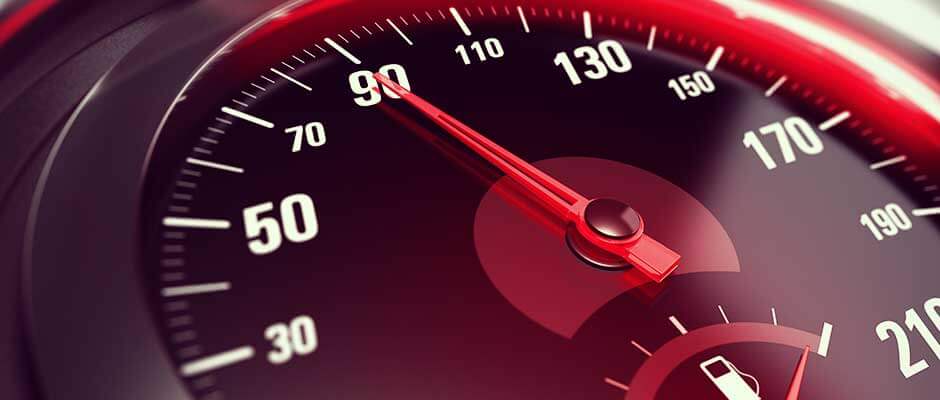When it comes to driving safely, speeding is a big cause for concern. The faster you drive, the longer the braking distance – and the quicker your reaction has to be to avoid accidents. Ultimately, speed limits are put in place for a reason, and as Think! explains: “The difference of a few miles per hour can mean the difference between life and death.”
It has been proven time and time again that speeding is one of the main factors of fatal road accidents. According to Think!, the risk of death amongst pedestrians when hit by a car traveling at 40mph instead of 30mph is four times higher.
The cost of speeding
The cost of the fines incurred for speeding has been a hot topic lately, and as of April 2017, there’s going to be another crackdown on the motorists making our roads unsafe by speeding.
Drivers who speed dramatically will be fined 150% of their weekly income, which is an increase of 50%. These penalties will be served to those caught speeding excessively, for example at 101 mph and over in a 70 mph area, or 50 mph and over in a 30mph zone. The reason for increasing the fines is to fall in line with the seriousness of the offence. The higher the speed you’re caught driving, the higher the fine will be.
Rules on disqualification, penalty points and other fines for breaking the speed limit still apply. When caught driving at the following speeds, you’ll receive the new increased fine:
- 41mph and over in a 20mph zone
- 51mph and over in a 30mph zone
- 66mph and over in a 40mph zone
- 76mph and over in a 50mph zone
- 91mph and over in a 60mph zone
- 101mph and over in a 70mph zone
If you’re caught speeding, no matter how much over the speed limit you are, you’ll be served with penalty points, a fine and even potentially a disqualification. In extreme cases, a prison sentence is a possibility too, especially if your speeding causes an accident.
There are speed awareness courses available, if you’ve been caught speeding, to help you understand the consequences and improve your driving behaviour. You’re allowed to attend one speed awareness course every three years. The courses have been designed to reduce the chances of you continuing to drive at high speeds – or being involved in an accident.
This fine increase has been welcomed by many automobile authorities, including the RAC, who point out that any driver braking the speed limit excessively is a huge danger to other road users – and is putting people’s lives at risk. Pete Williams, a road safety spokesman from the RAC, believes hitting speeding drivers with a hefty fine will make them rethink their behaviour.
So what can you do to prevent yourself from speeding?
First and foremost, it’s important to remember the speed limit displayed on the road you’re travelling on is the highest speed you should be driving at, if safe to do so. When travelling during bad weather, however, the speed limit could become dangerous.
It’ss always important to read the road ahead as best you can and adapt your driving and speed to the weather conditions. For example, if it is pouring with rain and your visibility has been reduced, the best option is to slow down and increase the distance between you and the car in front. This is because braking distances increase in wet weather. If something should happen, you can allow yourself to slow down as quickly and safely as possible, with enough distance in front of you to do so.
Don’t feel pressured if a driver behind you is driving close to you and egging you on to speed. The best option here is to pull over in a safe place and let them pass you. Otherwise, the driver behind may try and overtake you, which puts you in a position you’re no longer in control of. The driver may not pass in an appropriate place, and possibly hasn’t assessed the road ahead, which may put the overtaking driver and any other road users in a dangerous position, with an accident more likely to happen.
It’s so important to remember there’s no need to speed, no matter how late or frustrated you are. Speed limits are there to adjust your speed to a safe level, based on the area you’re travelling through, and to protect all road users. These new speeding fines came into force on the 24th April 2017.
